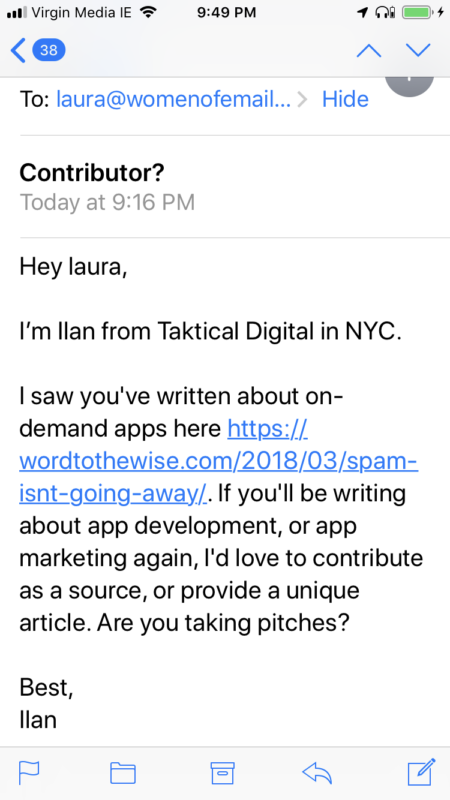It’s not marketing, it’s spam
- laura
- February 27, 2019
- Best practices
There are times when I hesitate to call what marketers do “spam.” I can use the euphemisms with the best of ’em. “Cold emails” “Targeted Marketing” “B2B marketing.”
I’ll say it here and now: cold emails are spam. Sales people who are sending enough email that they require automation to actually send the mail are spamming.
Look at this message that just showed up in one of my mailboxes.

In the screenshot, I’m really mad because they’re sending mail to my Women of Email address. That’s not the right place to send WttW email. It will never be the right place to send WttW email.
These emails are just so insulting. I have yet to receive one of these messages where the spammer reads the blog post they’re using to advertise. Spam isn’t going away anytime soon looks at all the software and online services that support this type of spam.
Another example is from earlier this week. The spammer found one of our SORBS posts and identified a link to mcafee.com. The pitch? “You review anti-virus software, so you should link to our whitepaper reviewing 10 different anti-virus programs.”
Yeah, spam is not going away any time soon. And a lot of what hits our inboxes these days is exactly this type of spam. The big companies are reasonably good at filtering the garbage. What we actually get is this kind of spam. It is a problem. It is spam. If you, or your company, sends this kind of mail you are spammers. If you sell software that makes it easy to scrape addresses or automatically followup to mail, you’re selling spamware.
There is no grey area here.
